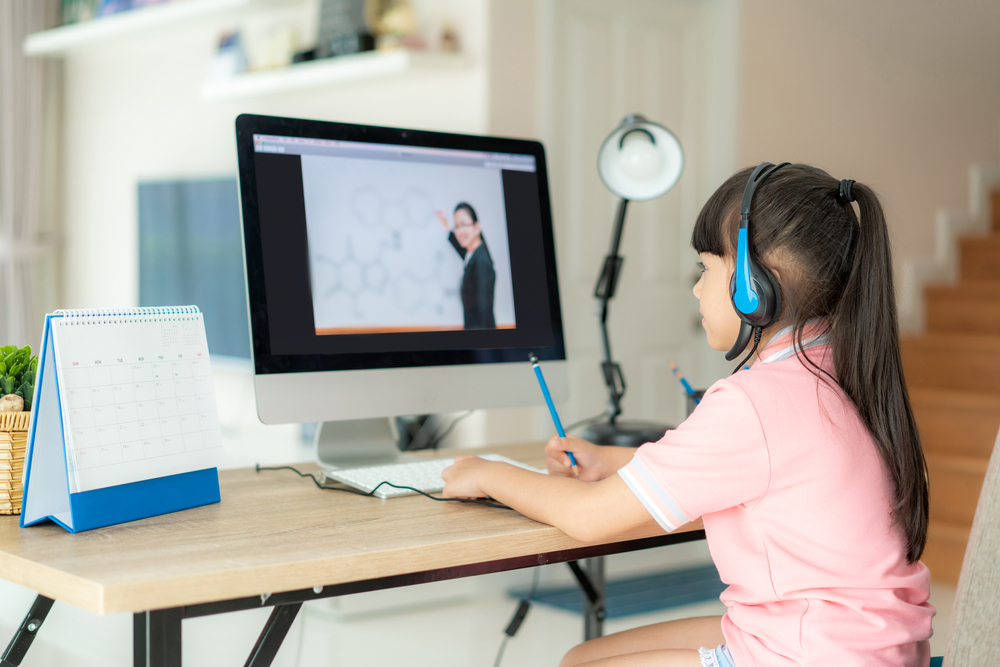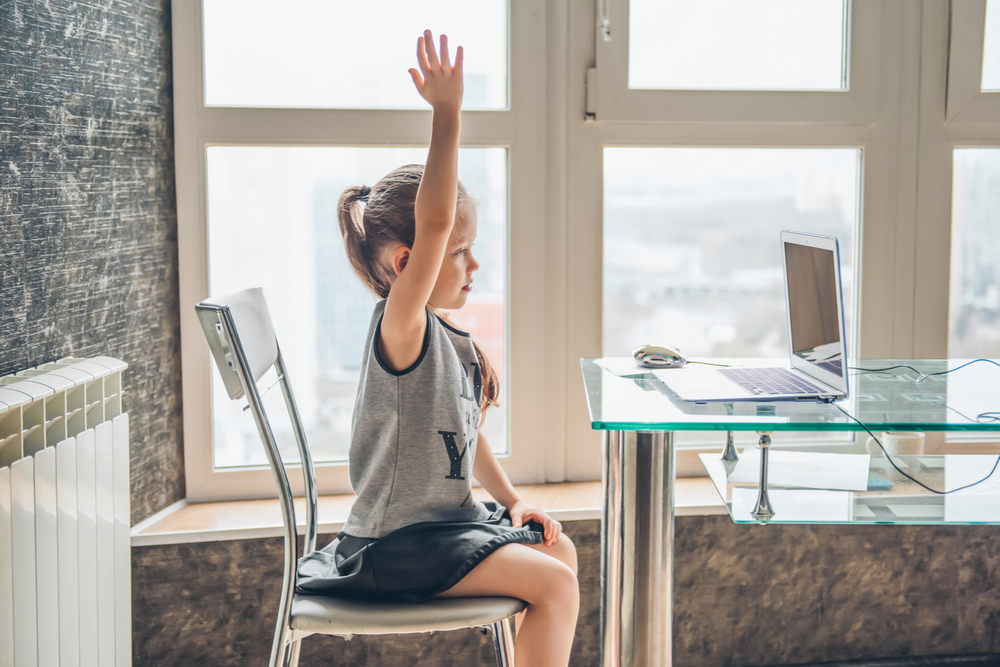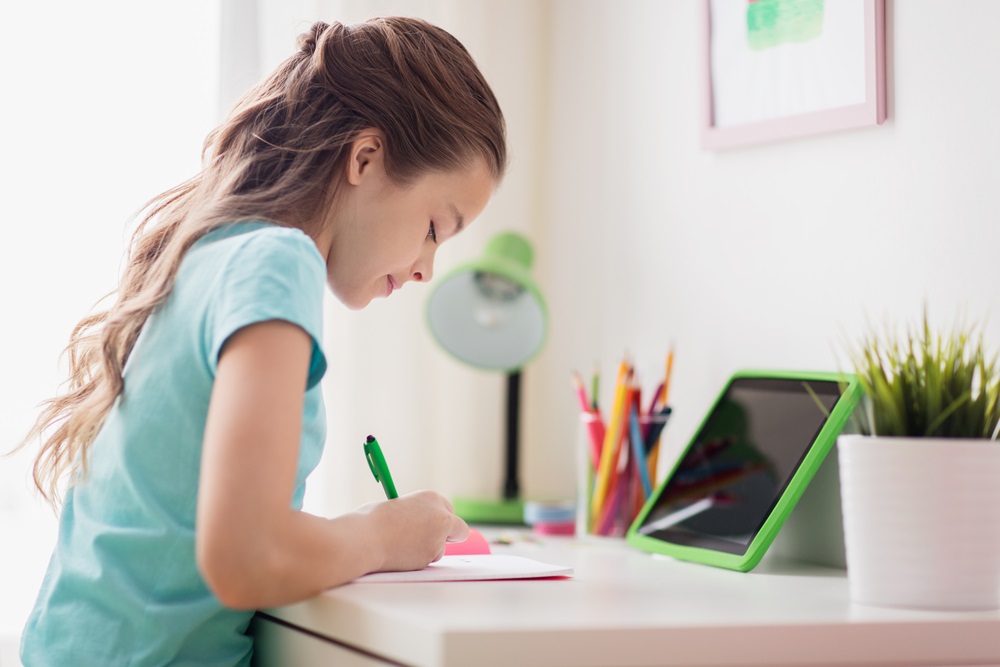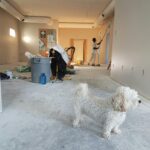Parents usually spend summer’s waning days helping their children prepare for a return to the classroom but, this year, the COVID-19 pandemic has shrouded the upcoming school year in uncertainty. Some schools plan to reopen with either socially distant classrooms or normal occupancy while other schools have opted to proceed with at-home virtual learning for the time being.
If your child will be attending school from home this year, as a parent you need to create an ideal learning environment. Keeping the room at a comfortable temperature, using expressive decorations and furnishings, and having all available learning tools on hand are very important aspects to an at home classroom. Though, this can be especially difficult to pull off in small spaces, but it will greatly enhance your child’s learning experience. Read below to find out how to create a positive at-home learning environment in small spaces!

Indoor Environment
The indoor environment of an at-home classroom is very important, as certain factors have been shown to significantly impact their cognitive function and ability to learn or focus. Utilizing natural light and certain colors can help create a better environment, and temperature is another important factor. Studies have shown that excessively hot or cold classrooms make it more difficult for students to learn, as they find themselves focusing on the temperature and ways to warm up or cool down rather than the subject material.
One way to ensure your child’s at-home classroom is the proper temperature is by installing a ductless mini split HVAC system. These highly efficient air conditioners provide homeowners with advanced control over indoor climate settings such as temperature, airflow, humidity, and more. They are also virtually silent during operation, so they will not distract your child. Mini splits also remove harmful airborne contaminants such as dust, dirt, debris, dander, mold, and mildew to improve indoor air quality and create a healthier environment.
The Workspace
Providing your child with an adequate workspace is key to creating a positive at-home learning environment. Some have the luxury of dedicating multiple areas in their home to their child’s learning, but this may not be feasible in smaller homes or apartments. You must provide your child with a desk and chair, two of the more important elements of a classroom. Some opt to use already present furniture, such as a kitchen table and chair, while others purchase new equipment for their child.
You will also need to provide your student with any necessary school supplies. School supplies are largely dependent on your child’s age and curriculum, but general necessities include pencils, pens, notebooks, folders, and a calculator. You will also need proper storage for supplies and schoolwork, as a messy work area can inhibit productivity and make it difficult to quickly locate needed supplies.
Some opt to use existing storage areas in the home, but you can also purchase portable storage to be used exclusively for school supplies. Stackable plastic bins, cabinets, folders, and shelves all work for storage of supplies in small spaces. A clean and organized work area leads to a more productive and focused student.
One of the more important supplies is a computer or tablet. Since most, if not all, of their curriculum will be virtual, the computer and tablet are their lifeline to the classroom and any necessary course materials. Screen size, touchscreen, battery life, and webcam quality are some of the many important computer specifications and capabilities to consider.
You should also make sure your internet can handle at-home learning, as slow and buffering internet will significantly inhibit your child’s learning experience. Ways to strengthen your internet service include relocating the router, minimizing other device use while your child is learning, and upgrading your service or switching providers entirely.

Keep a Schedule
Keeping a schedule helps create a positive learning environment at home. Establishing a clear routine helps to replicate the structure of a physical classroom environment and keeps your child focused on their schoolwork. While some of this may be accomplished for you through scheduled lectures and other elements of virtual learning, it will certainly help to establish your own scheduled times for schoolwork, reading, and other educational activities.
Part of keeping a schedule is allowing adequate time for breaks. The school day is normally broken up with lunch and recess, physical education, or study hall, depending on your child’s age. Providing the same structured break times at home can keep your child from getting “burned out” on schoolwork, and it also forces them to step away from the screen for a bit.
It helps to let your student take a break outside, as the breath of fresh air can help them refocus and recharge for the rest of the day. Physical activity is also recommended, as virtual learning means they may remain sedentary for long periods of time. Remaining seated for long periods of time can lead to fatigue and weight gain, but physical activity during the day can provide a much needed energy boost.
Eliminate Distractions
When learning in a small space, it is fairly easy to get distracted from the task at hand, and electronics can be especially distracting for homeschoolers. It seems like there are endless ways to lose focus, between texting, social media, television, video games, and the internet, but eliminating distractions helps keep them focused, as they would be in a normal classroom.
This can be especially difficult in small spaces, as your children may find themselves having to focus on school in the same room where they usually relax by watching television, playing video games, or partaking in other hobbies. It may help to put their phones in another room while they are learning, as this will eliminate one of their biggest electronic distractions for the time being. You could also use electronics as a reward or incentive for completing school work on time or early.

Creating a positive at-home learning environment in small spaces may seem difficult, but it is more than possible by following these simple steps. This is only temporary and, soon enough, your children will be back in the classroom with their best friends!






